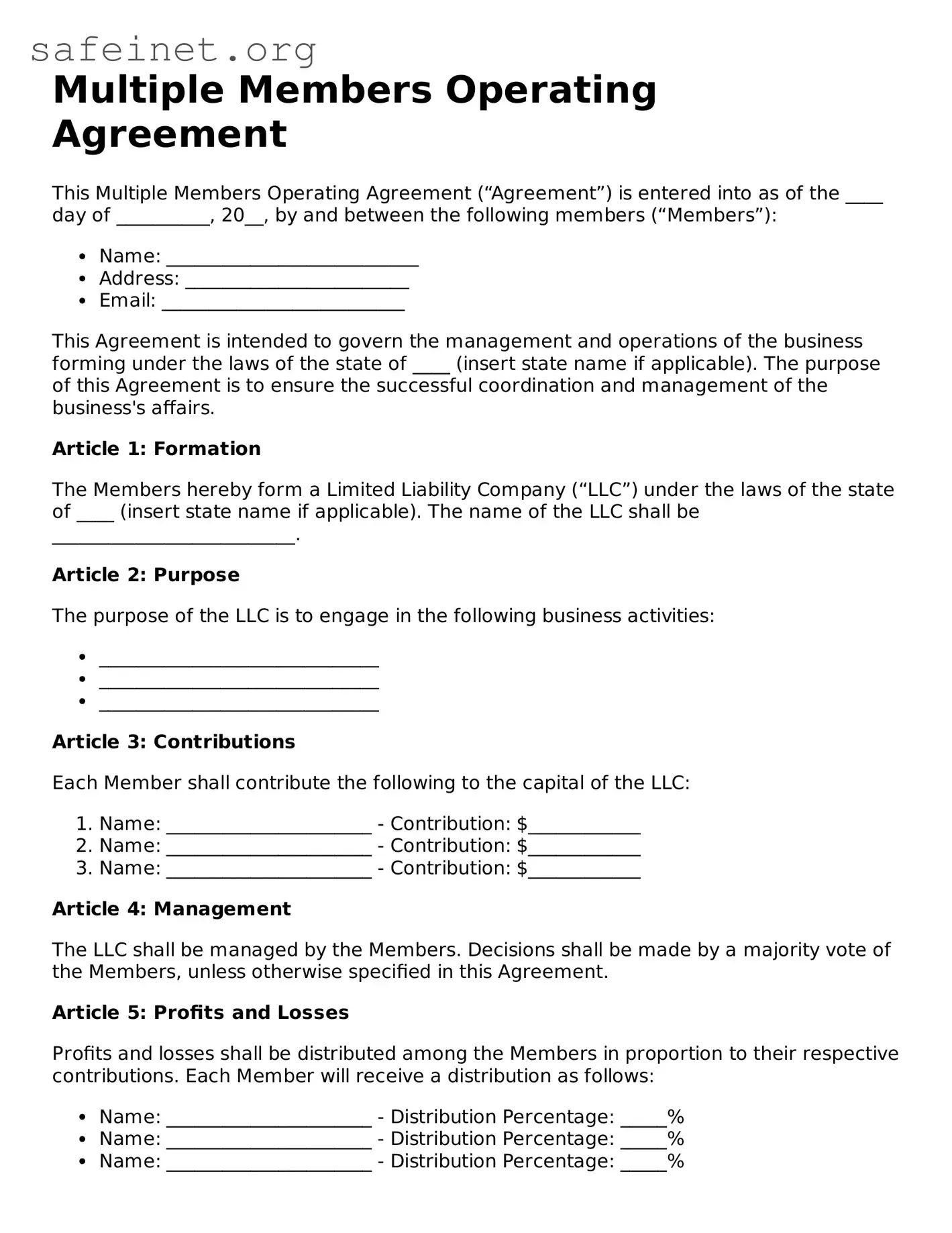Multiple Members Operating Agreement
This Multiple Members Operating Agreement (“Agreement”) is entered into as of the ____ day of __________, 20__, by and between the following members (“Members”):
- Name: ___________________________
- Address: ________________________
- Email: __________________________
This Agreement is intended to govern the management and operations of the business forming under the laws of the state of ____ (insert state name if applicable). The purpose of this Agreement is to ensure the successful coordination and management of the business's affairs.
Article 1: Formation
The Members hereby form a Limited Liability Company (“LLC”) under the laws of the state of ____ (insert state name if applicable). The name of the LLC shall be __________________________.
Article 2: Purpose
The purpose of the LLC is to engage in the following business activities:
- ______________________________
- ______________________________
- ______________________________
Article 3: Contributions
Each Member shall contribute the following to the capital of the LLC:
- Name: ______________________ - Contribution: $____________
- Name: ______________________ - Contribution: $____________
- Name: ______________________ - Contribution: $____________
Article 4: Management
The LLC shall be managed by the Members. Decisions shall be made by a majority vote of the Members, unless otherwise specified in this Agreement.
Article 5: Profits and Losses
Profits and losses shall be distributed among the Members in proportion to their respective contributions. Each Member will receive a distribution as follows:
- Name: ______________________ - Distribution Percentage: _____%
- Name: ______________________ - Distribution Percentage: _____%
- Name: ______________________ - Distribution Percentage: _____%
Article 6: Records
The LLC shall maintain complete and accurate records of its operations and financial affairs. Each Member shall have the right to inspect such records at any reasonable time.
Article 7: Amendments
This Agreement may be amended only in writing, with the consent of all Members.
Article 8: Governing Law
This Agreement shall be governed by the laws of the state of ____ (insert state name if applicable).
IN WITNESS WHEREOF, the Members have executed this Agreement as of the date first written above.
___________________________________________
Member Name: ___________________________
___________________________________________
Member Name: ___________________________
___________________________________________
Member Name: ___________________________
